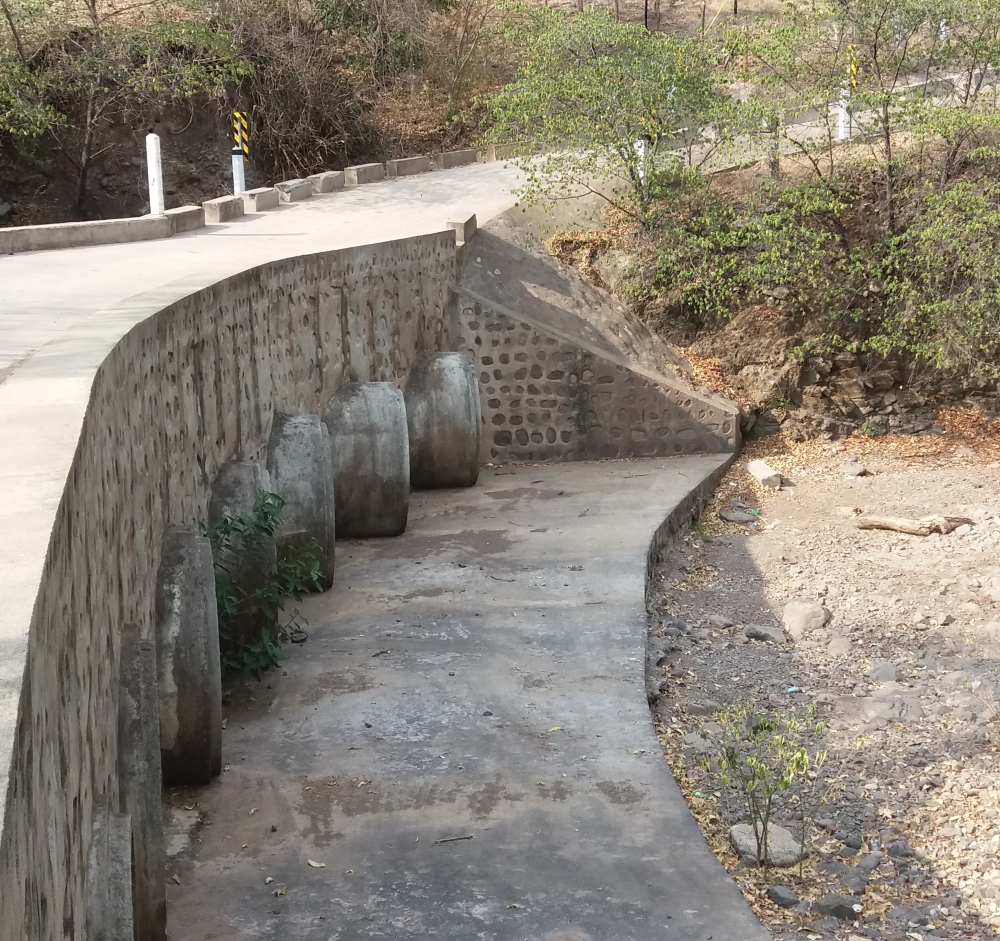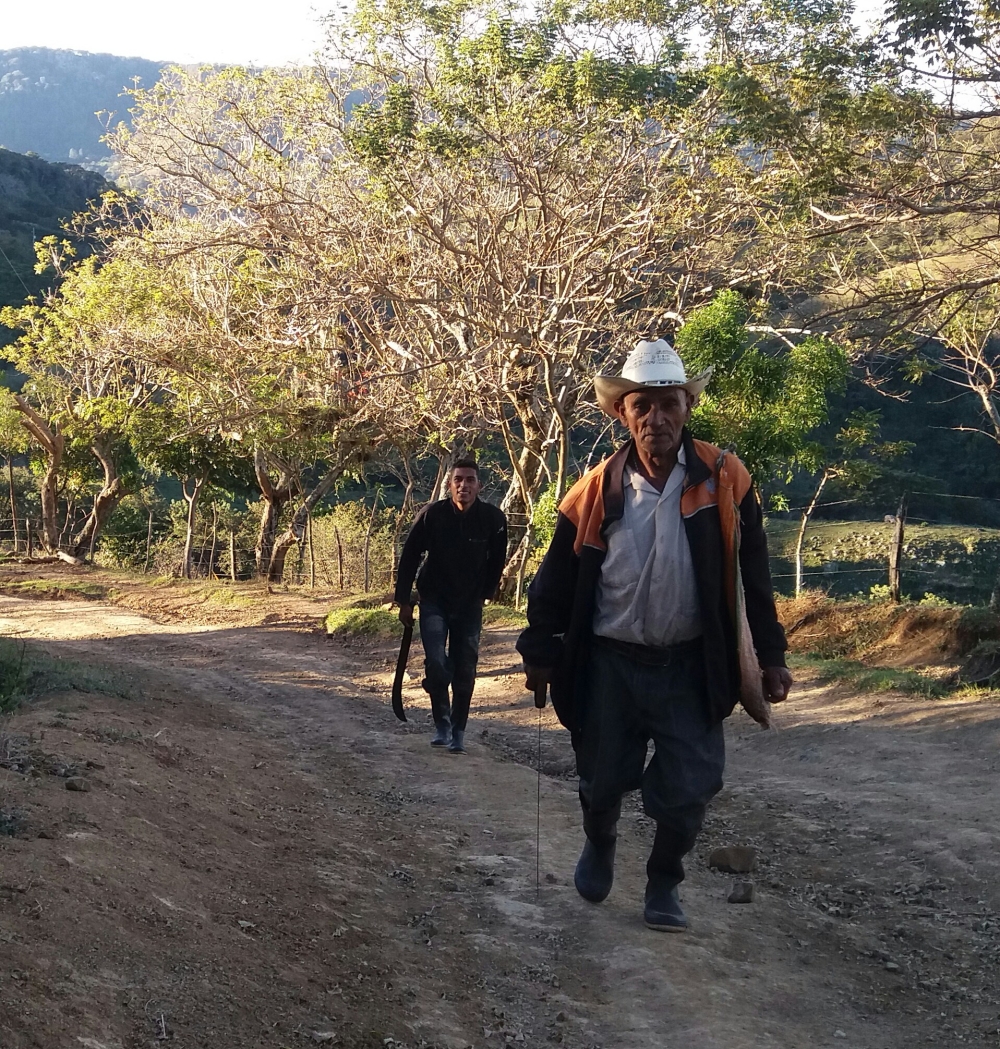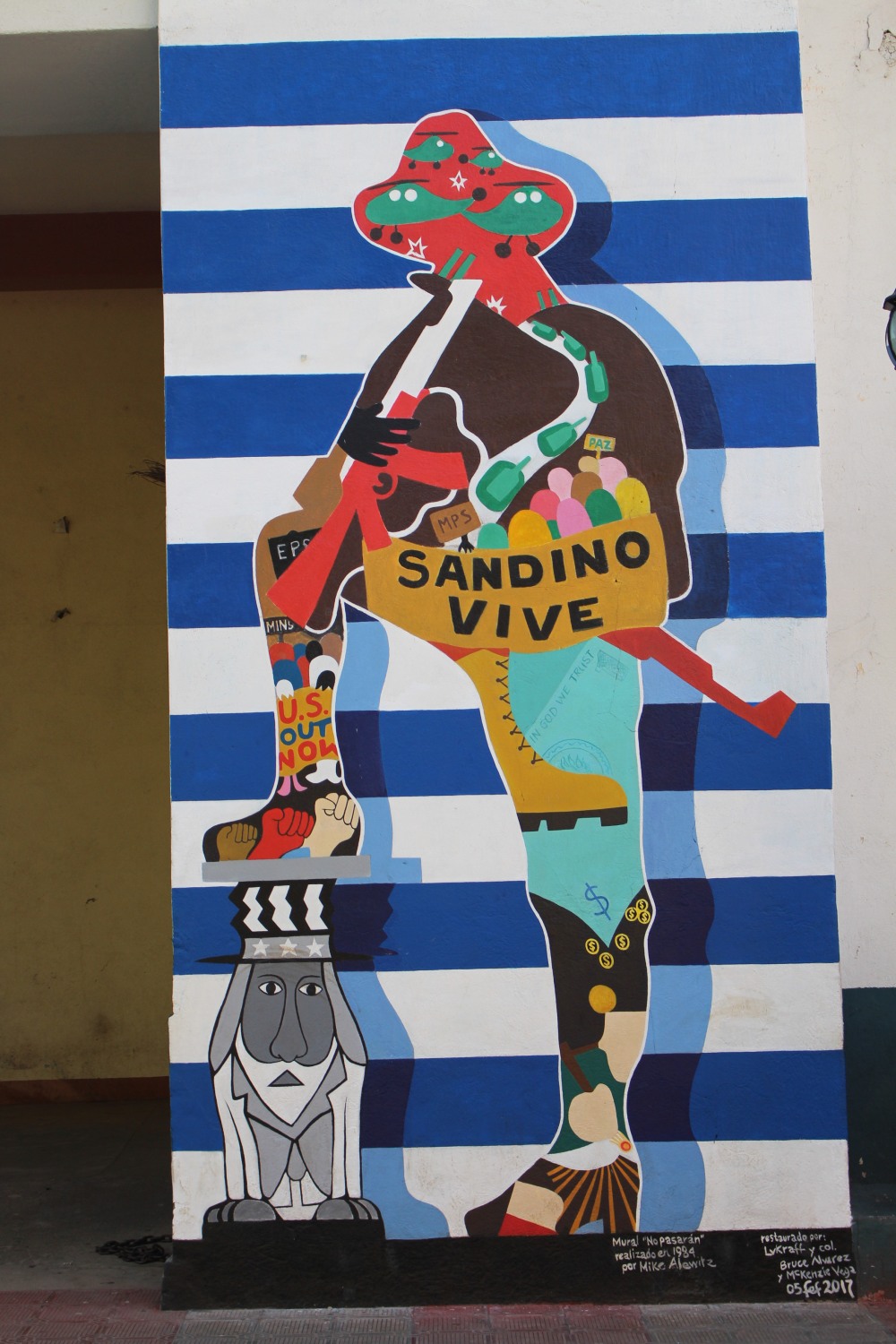
NICARAGUAN ALPHABET A to M
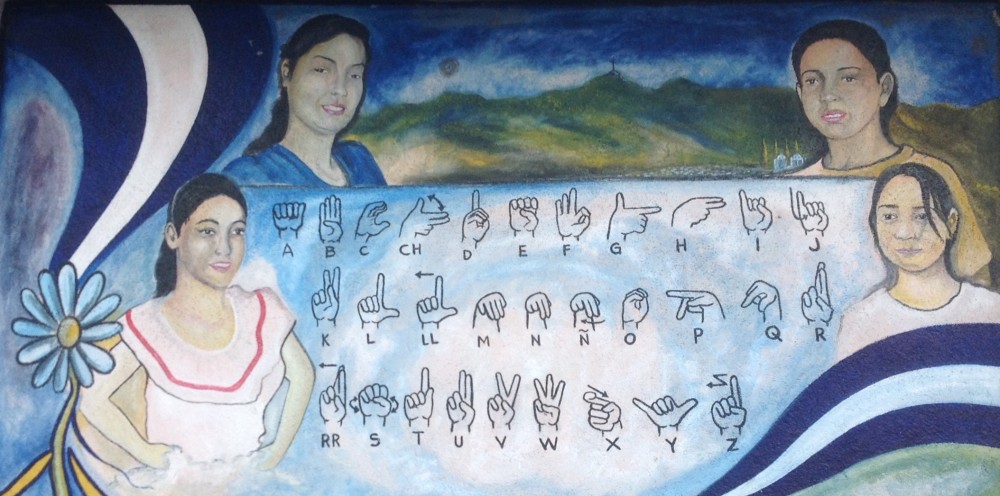 I lived in Nicaragua for three years, & devised this alphabet before my return to the UK – my best memories….
I lived in Nicaragua for three years, & devised this alphabet before my return to the UK – my best memories….
A is for AMERICA CENTRAL
Nicaragua is one of the seven small countries that make up the Central American isthmus. Proud & patriotic, but most of these countries are also poor, institutionally weak & unstable. Nicaragua is the poorest country on the continent of ‘America Latina’
A could also be for ADOQUINES – (Paving Stones, very important in Nicaragua).
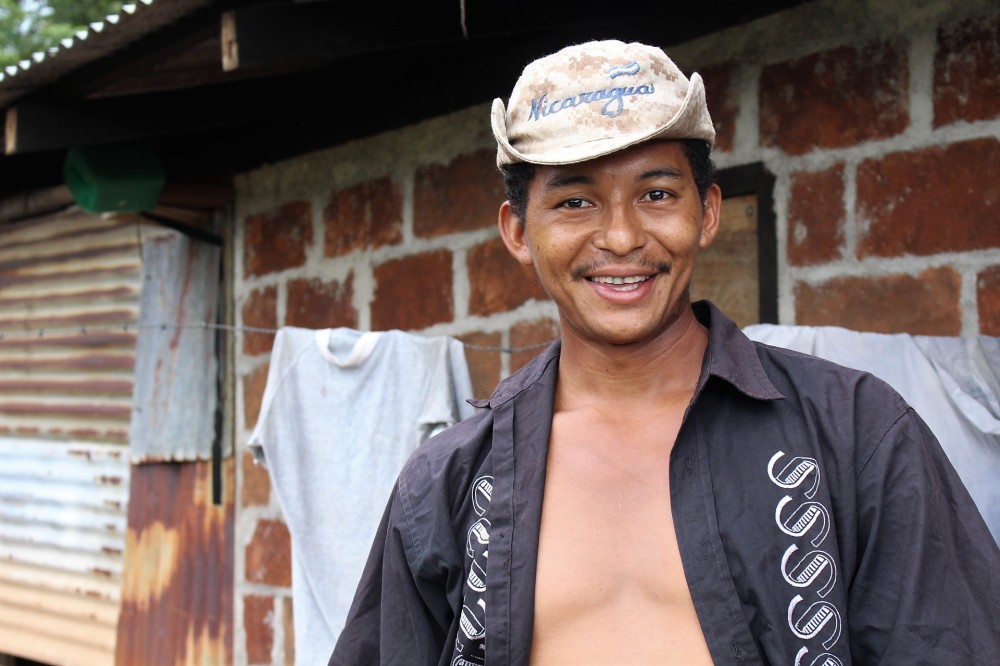
B is for BEACH
Nicaragua has fantastic beaches. Living in Leon our favourite is Las Peñitas which we love. It’s very beautiful & ‘tranquilo’.
B could also be for BARRICADES, built from paving stones. From May to July 2018 people built barricades to keep out the police & paramilitaries. B is also for my BLOG Nicaragua caminando
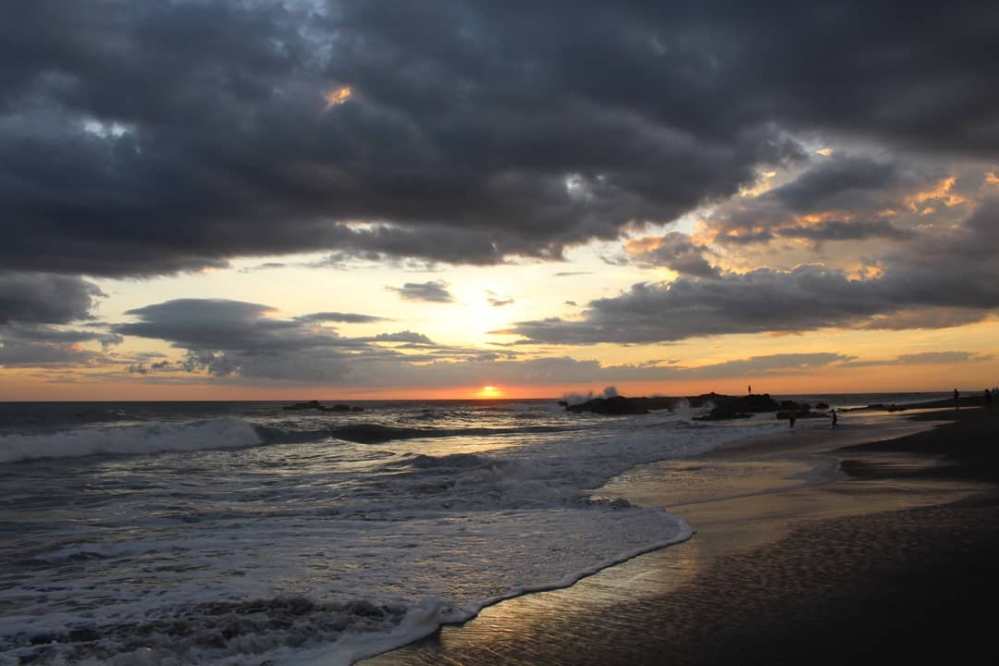
C is for COUNTRYSIDE (El Campo)
Nicaragua has beautiful highlands, lakes, waterfalls & rain-forest, with lovely vegetation. Kath & I always enjoyed hiking in the greenery. Though the government needs to bring to an end the deforestation that is destroying the remaining rainforest.
C could also be for COFFEE (lovely to drink & shade-grown is good for the countryside). Or C for the CAMPESINOS who work in the countryside. Good people.
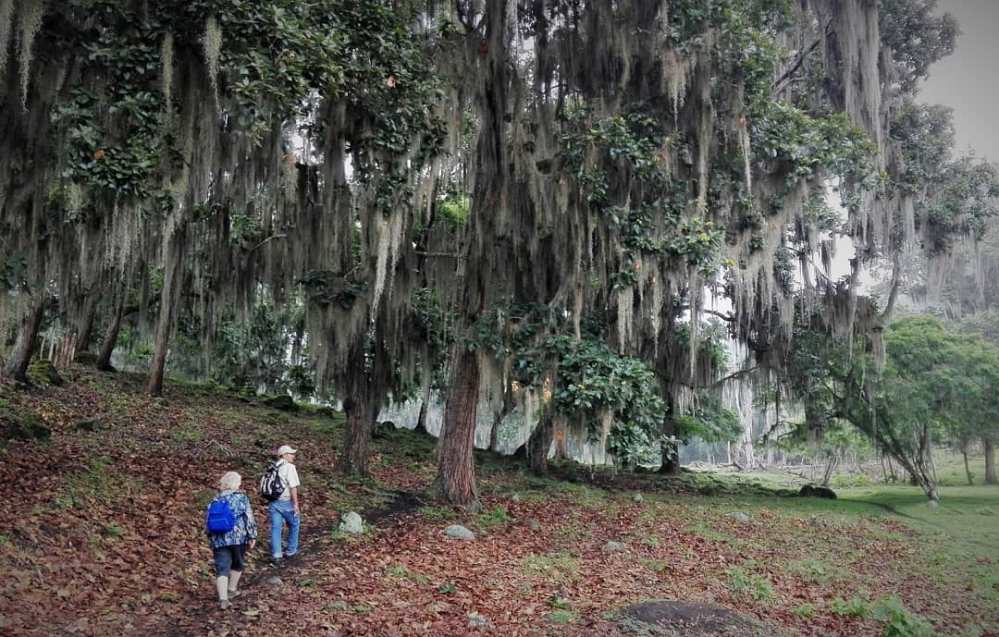
D is for DANIEL ORTEGA
In 1984 I came to Nicaragua to support the young Sandinista revolution, & their president Daniel Ortega. The FSLN were a brave young effort committed to improving the lives of the poor. Today Daniel is still president, still leader of the party, & has become a corrupt violent authoritarian, repressing his own people. Power corrupts. What a shame. This country deserves better.
D is also for DEAF, Kath worked supporting the deaf community. Before the troubles started, D also would be for hosting DELEGATIONS.
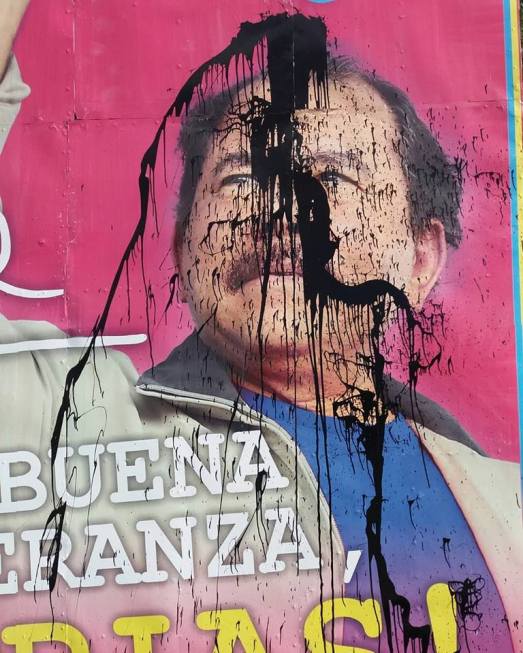
E is for EDUCATION
In my work in Leon with PGL, we fund eight NGOs who support children’s education. Kath works supporting Deaf Education, so we have visited many state schools. On the plus side Nicaragua has free education for the poor, & high’ish rate of attendance. On the negative side, education quality is very poor. Teacher attendance is poor, & sadly children spend very little time actually learning.
E is also for the ENVIRONMENT (Nicaragua has a commendable record on renewable energy).
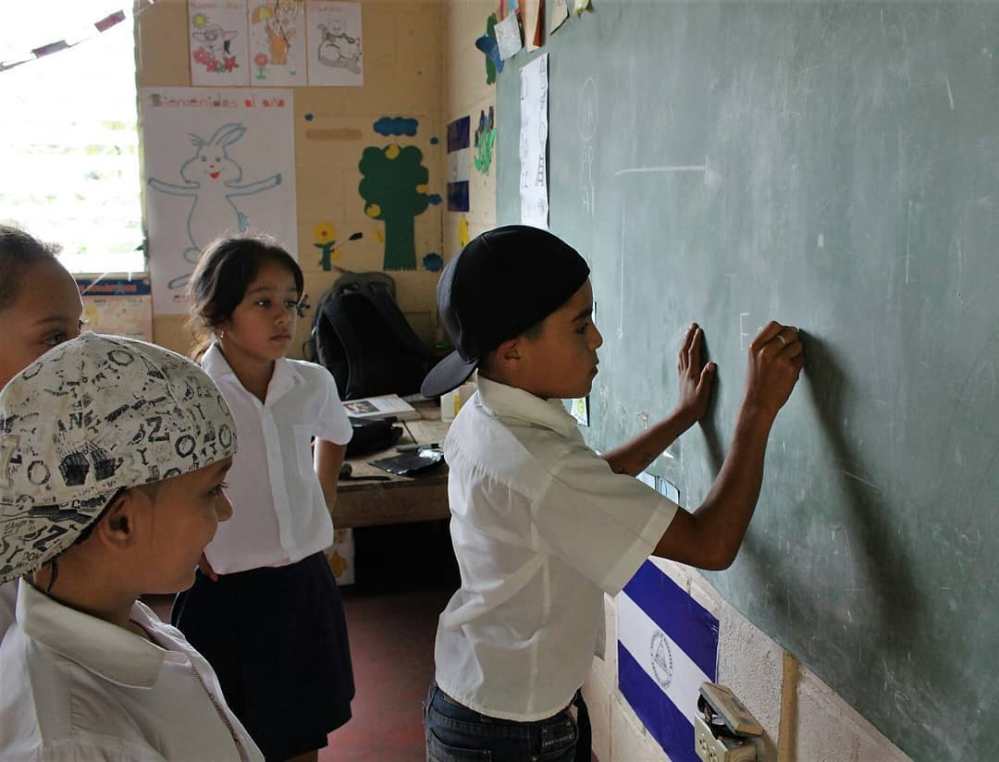
F is for FRESH FOOD – for example FISH, & cheap FRUIT, gallo pinto, beans, tortillas, crema. We like Nicaraguan food. F could also be FIESTAS which are always great fun.
F could also be for the FSLN. In power for too long & with no younger generation leaders coming through. As a friend of mine said, ‘F is for Frente… we should keep their great sacrifice & their hope in our hearts, but their decline in our heads, as a warning for the future’.

G is for GODOY BROTHERS MUSIC
The Godoy brothers (Carlos & Luis) have been the soundtrack of Nicaragua for more than forty years. Authors of the famous ‘Nicaragua Nicaraguita’ they were early supporters of the FSLN armed struggle in the 1970’s, & their songs have been hugely popular ever since. At any event in Nicaragua the band will play the favourite Godoy songs. Since the April protests began the Godoy brothers have supported the opposition, & Carlos Mejia Godoy has been forced to flee into exile in Costa Rica, now in fear of his life from the party he supported for so many years.
G is also be for GIGANTONA, a well-known giant in Leon. And G is for GETTYSBURG – Project Gettysburg-Leon is where I work, a terrific bunch of committed activists in Leon’s Sister City or Twin-town.
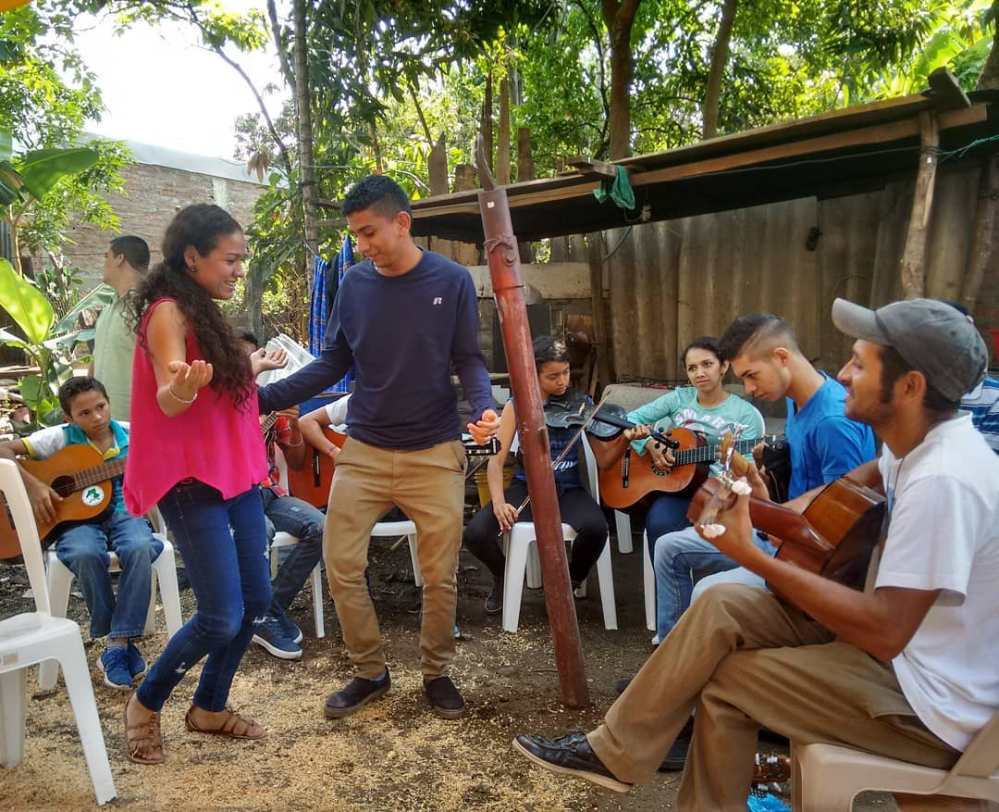
H is for HOMESTAYS
If you visit Nicaragua as a tourist you should really stay in a homestay, ie with a local family. Kath & I stayed many weekends in rural houses, for example in Miraflor or around San Ramon, Matagalpa. At my work for PGL we would put up visiting students in urban homestays in Leon, & they always say it’s the best thing about their trip. The photo shows breakfast in a Homestay in Miraflor.
H could also be for HOMEWORK CLUBS (which PGL fund), or HEAT in Leon or HEART. We are leaving Nicaragua because Kath has been diagnosed with a heart issue that needs an operation.
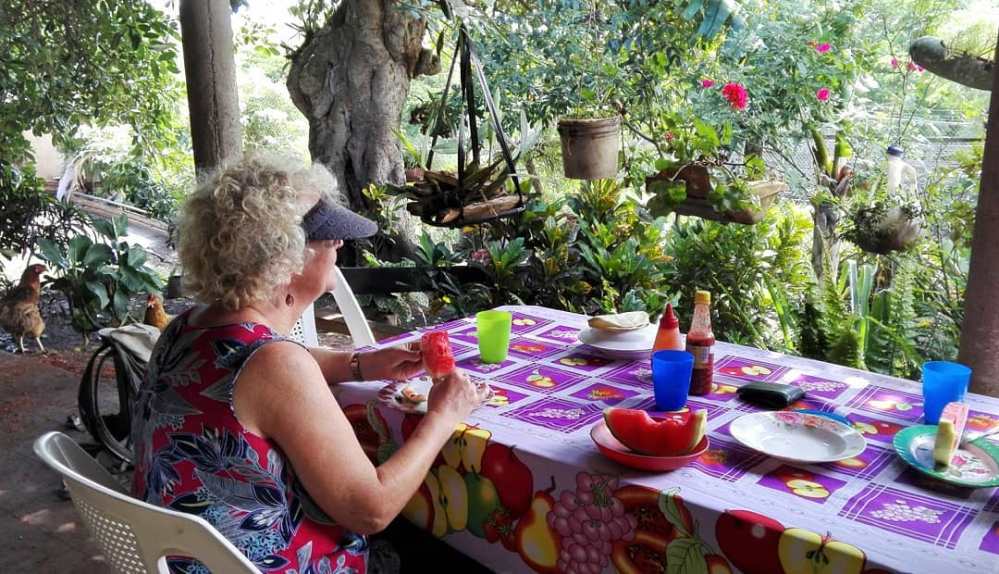
I is for IDIOMAS – languages – including Idioma Nicaraguense de Señas
Kath & I both had to polish up our Spanish to work here, with lots of Nicaraguanismo vocab. But Kath had a much greater challenge: Nicaraguan Sign Language. NSL is the worlds youngest language, formed soon after the 1979 revolution. Kath enjoyed working with the Nicaraguan deaf community but speaks BSL (British Sign Language). NSL is as different to BSL as chalk is to cheese.
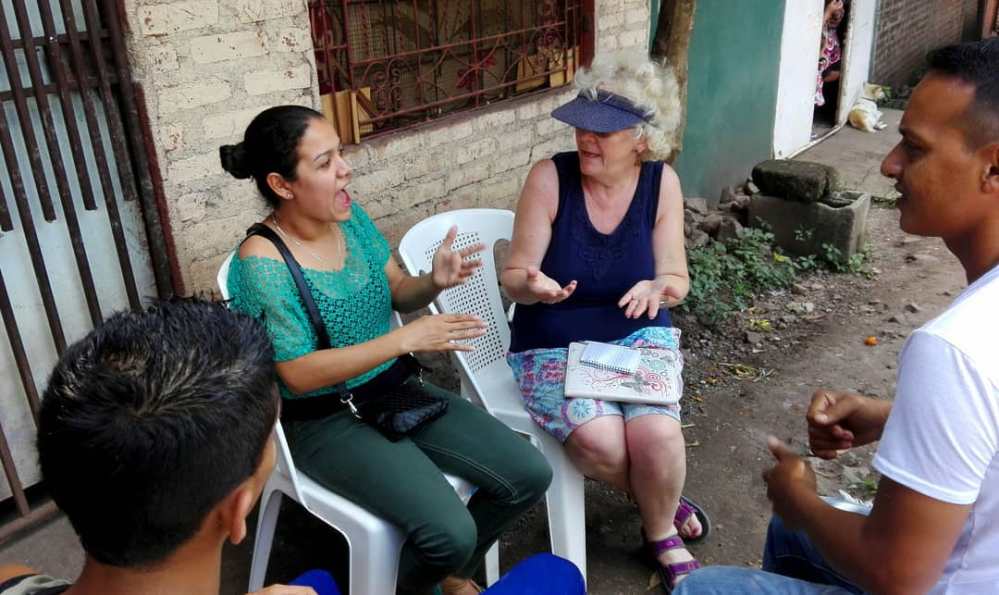
J is for JINOTEGA
Jinotega is a lovely town in the mountains of Northern Nicaragua, little visited by tourists. If you do go it is a lovely base for walks in the hills. You can climb up to a cross high-above the town, 960 steps up a hill-side. Jinotega is where Kath worked one week a month at the School for the Deaf with Mayflower Medical Outreach (MMO).
J could also be for JUSTICE. Justice denied to the 400 demonstrators who have been killed since the protests began in April 2018 (mainly, but not all, by government forces), and the scores of students imprisoned since August.
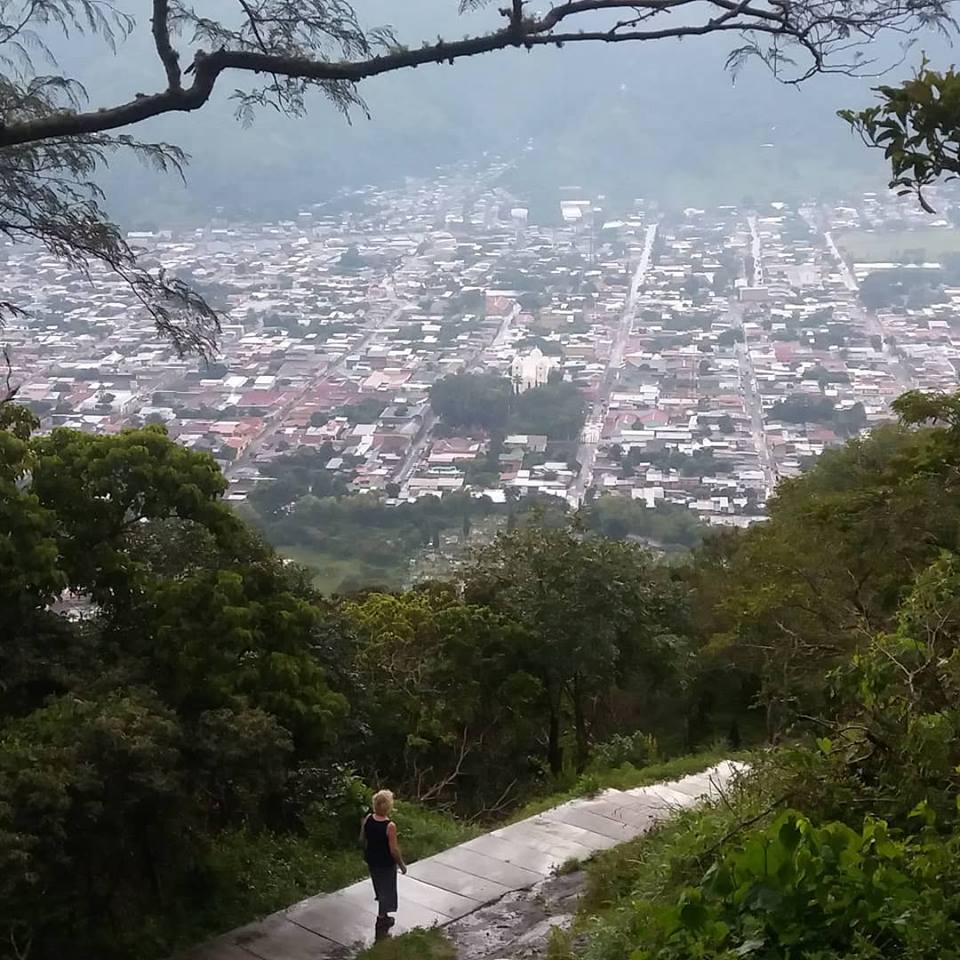
K is for KATHLEEN
Everything good I have done in Nicaragua Kath has been with me. Together we went through a few difficult times & lots of good times. Kath is always popular, in her work with the deaf, & with all the PGL partners. Kath’s health is troublesome at the moment but we are all very confident it will soon be fixed & she will be back at 100%.
K is also for KAYAK. Nicaragua has lovely lakes & rivers to kayak on & we had some great times watching the birds, the sunsets & the nature.
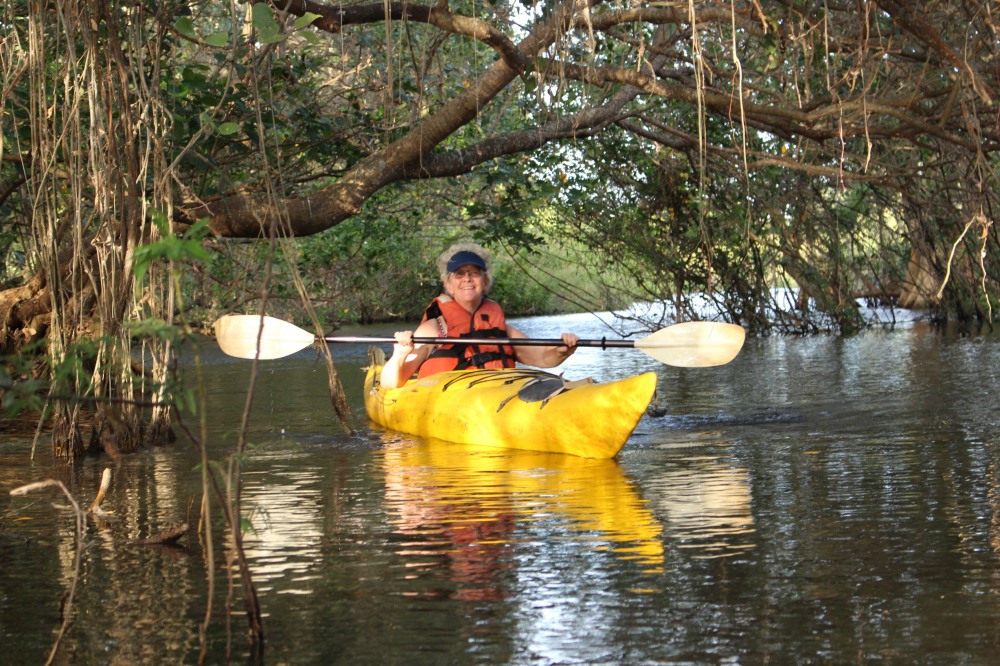
L is for LEON
Leon is where Kath & I lived most of our time in Nicaragua. It is a nice town & we were mainly happy here. It is an old colonial town but not poshed up yet like Granada, it is crumbling around the edges, in fact many of the homes are falling apart. It is a university town with lots of cheap eateries, & a lovely Cathedral. The photo here shows the church & plaza just behind our house, where we would stroll around in the evenings & see the sunset. Nearby are nice beaches & some good volcanic hills to hike in. On the other hand it is extremely hot, & our house had a lot of mosquitos.
L could also be for LAKES, Nicaragua has two enormous lakes as big as an inland sea.
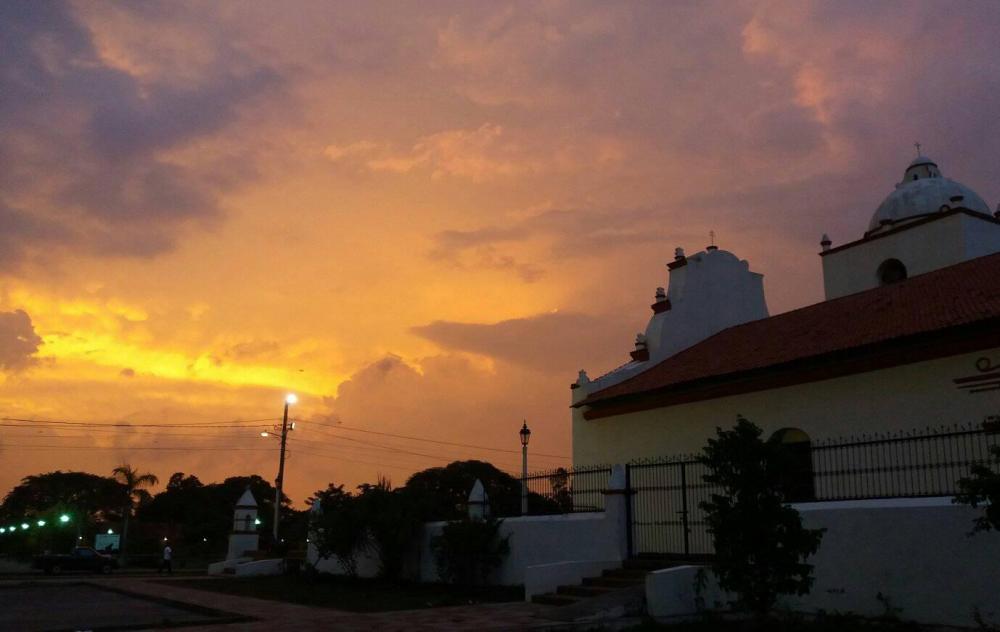
M MOSQUITOS & MURALS
For Kath M is for MOSQUITOS because she got bitten a lot by them, especially in the rainy season. Lucky me, I rarely got bitten. So for me M is for MURALS. Nicaragua has lovely murals on walls all over the country, although most of the old socialist murals of the revolution were erased in the 1990s. The mural below shows the Somoza dictatorship shooting unarmed students in 1959. History repeats itself.
M could also be for MIRAFLOR (a lovely countryside area), or MASAYA (the most violent & smashed up town during the roadblocks in May June July this year), or MASKS (as worn by protesters & paramilitaries).
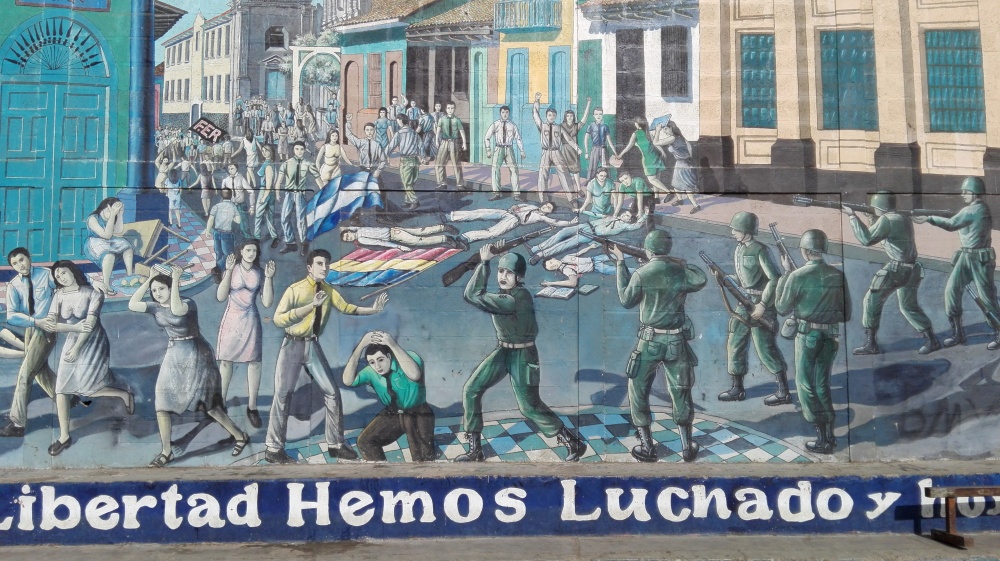
The second half of the Alphabet will be up shortly. Please share this blog. You can also write comments below – what have I left out, what would you have included?
Many more beautiful photos of Nicaragua can be seen on my Instagram site – follow @owstonlewis








